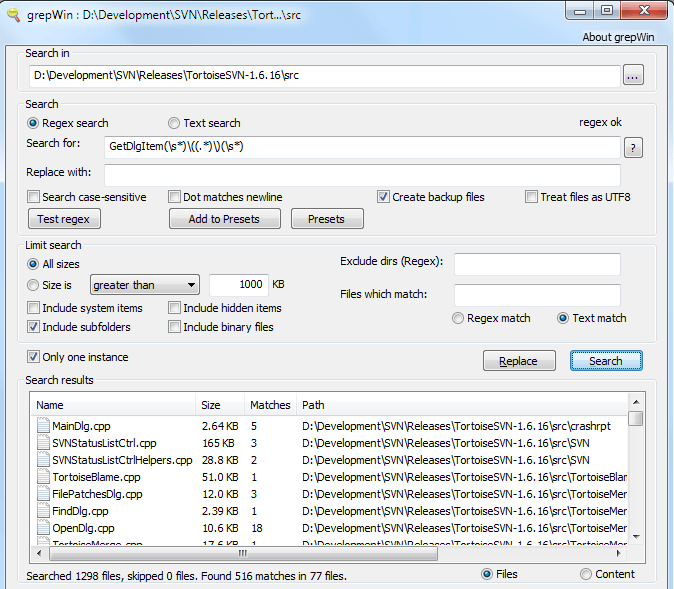


There's also a -C (-context) option which is equal to -A + -B. A 1 means one line after the matched line and -B 1 means one line before the matched line. A (-after-context) and -B (-before-context) - print the lines after and before (respectively) the matched pattern grep grep grep.txt -A 1 -B 1 With option -o, only the matched pattern is printed line by line. o (-only-matching) - print only the matched patternīy default, grep prints the line where the matched pattern is found. With the option -w, grep ensures that the matches are exactly the same pattern as specified. This means that grep yo grep.txt will print the same results as grep yo grep.txt because 'yo' can be found in you. `-w` (-word-regexp) - print matches of the whole wordīy default, grep matches strings which contain the specified pattern. # all files in the current directory that matches l (-files-with-matches) - print file names that match a pattern # command 1 i (-ignore-case) - used for case insensitivity # command 1ĥ. Notice that we also used option -n? Yes, you can apply multiple options in one command. v (-invert-match) - prints the lines that do not match the specified pattern grep you grep.txt -v -n This is because it is concerned with the number of lines where the matches appear, not the number of matches. Note that if there was another 'you' on line one, option -c would still print 2. c (-count) - prints the number of lines of matches grep you grep.txt -c If you look at the result we have above, you'll notice there are no line numbers, just the matches.

This prints out the matches for the text along with the line numbers. Let's look at nine of them while applying them to the example above. You is expected to have a different color than the other text to easily identify what was searched for.īut grep comes with more options which help us achieve more during a search operation. The result for this is: Hello, how are you The following grep command will search for all occurences of the word 'you': grep you grep.txt If there is no match, no output will be printed to the terminal.įor example, say we have the following files (called grep.txt): Hello, how are you The result of this is the occurences of the pattern (by the line it is found) in the file(s). You can also use the wildcard (*) to select all files in a directory. Note that single or double quotes are required around the text if it is more than one word. Without passing any option, grep can be used to search for a pattern in a file or group of files.
Unix search for text in files how to#
In this article, we'll look at how to use grep with the options available as well as basic regular expressions to search files. Grep comes with a lot of options which allow us to perform various search-related actions on files. It is a command line tool used in UNIX and Linux systems to search a specified pattern in a file or group of files. In a previous version of himself he wrote books on technology.Ĭontent is licensed under a Creative Commons Attribution-NonCommercial-ShareAlike 4.0 International (CC BY-NC-SA 4.Grep stands for Globally Search For Regular Expression and Print out. He is interested in people, music, food and writing. You can edit it here and send me a pull request.
Unix search for text in files update#
Have an update or suggestion for this article? Some examples of using UNIX find command.Find Command in Unix and Linux Examples.A collection of Unix/Linux find command examples.To be prompted to confirm deletion combine -exec with rm -i. This will delete the file with no undo so be careful. To find and delete a file pass the -delete option to find. The file foo.txt can be located with the find by using the -name option. Suppose the following directory structure exists shown here as the output of the tree command. To find a single file by name pass the -name option to find along with the name of the file you are looking for. By using the - exec other UNIX commands can be executed on files or folders found. It supports searching by file, folder, name, creation date, modification date, owner and permissions. It can be used to find files and directories and perform subsequent operations on them. The find command in UNIX is a command line utility for walking a file hierarchy. How to search for text within multiple files.How to find and replace in a range of files.Examples of finding a file by name, finding and deleting a file, finding a directory and searching by modification time and permissions.Įstimated reading time: 3 minutes Table of contents Last updated Monday, Linux and Unix find command tutorial with examples Tutorial on using find, a UNIX and Linux command for walking a file hierarchy. Linux and Unix find command tutorial with examples | George Ornbo


 0 kommentar(er)
0 kommentar(er)
